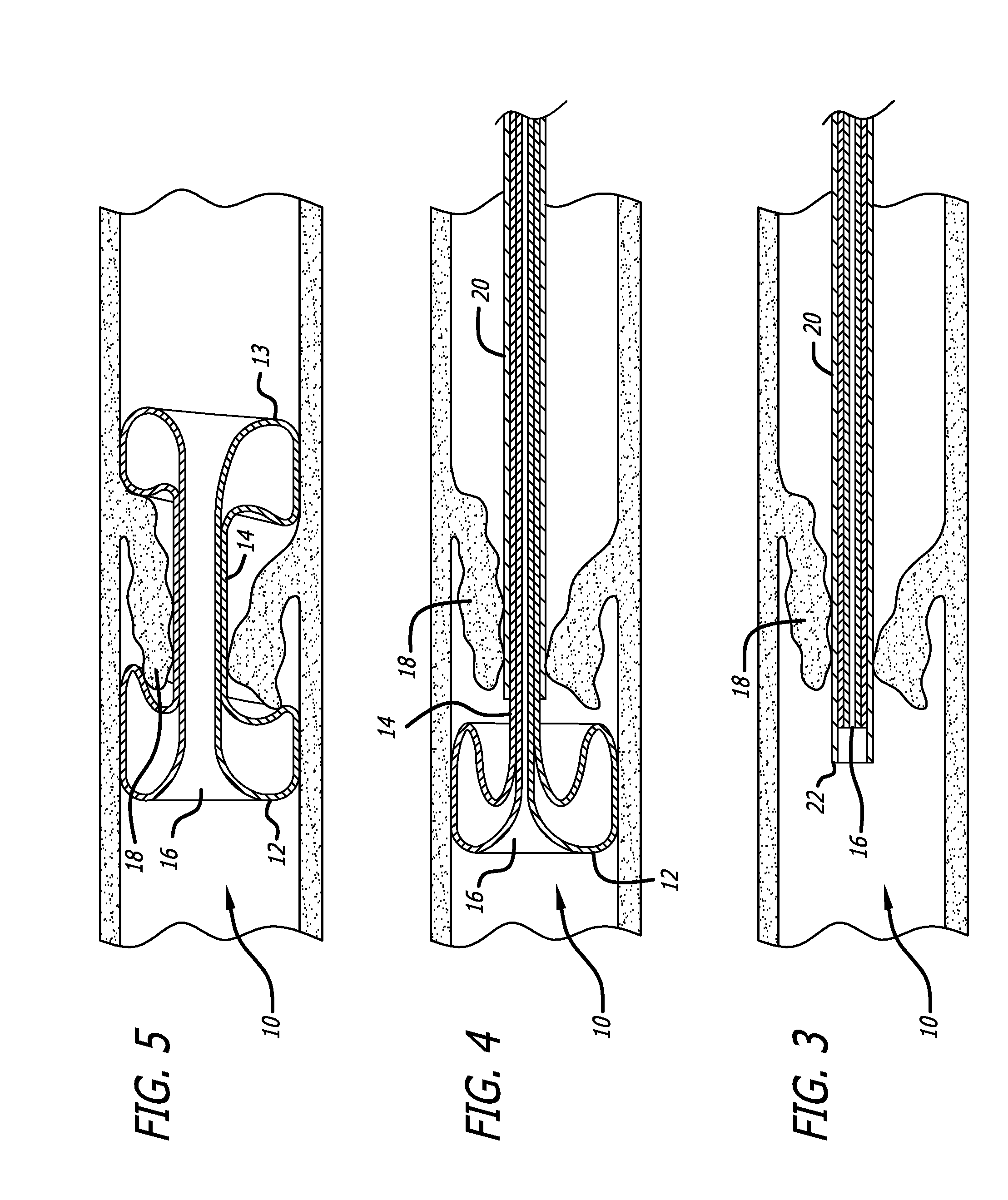Intravascular cuff
a cuff and artery technology, applied in the field of intravascular cuffs, can solve the problems of reducing the diameter of the lumen, thickening of the valve leaflet, and subsequent immobility or reduction of mobility, and achieve the effect of reducing the diameter lumen
- Summary
- Abstract
- Description
- Claims
- Application Information
AI Technical Summary
Benefits of technology
Problems solved by technology
Method used
Image
Examples
Embodiment Construction
[0019] Referring now to the Figures and first to FIGS. 1 and 2, there is shown an intravascular cuff 10 of the present invention. The cuff 10 is shown in its relaxed, expanded configuration and comprises a generally tubular structure having two flared ends 12 and 13 and a narrow tubular body 14. The elongated tube that is used to construct the cuff 10 is formed from at least one braided strand capable of exhibiting super-elasticity or shape memory. In one embodiment, the elongated tube is folded in half upon itself such that the first end 12 becomes a folded end and the second end 13 includes a plurality of unbraided strands. The tubular body is thus two-ply. The strand or strands may be fibrous, non-fibrous, multifilament, or monofilament. Nitinol is an example of a preferable material for the strand(s). The strand(s) are braided to allow the device to be expanded longitudinally into a very long, thin tube capable of being placed in a very small delivery catheter. Preferably, the c...
PUM
 Login to View More
Login to View More Abstract
Description
Claims
Application Information
 Login to View More
Login to View More - R&D
- Intellectual Property
- Life Sciences
- Materials
- Tech Scout
- Unparalleled Data Quality
- Higher Quality Content
- 60% Fewer Hallucinations
Browse by: Latest US Patents, China's latest patents, Technical Efficacy Thesaurus, Application Domain, Technology Topic, Popular Technical Reports.
© 2025 PatSnap. All rights reserved.Legal|Privacy policy|Modern Slavery Act Transparency Statement|Sitemap|About US| Contact US: help@patsnap.com



